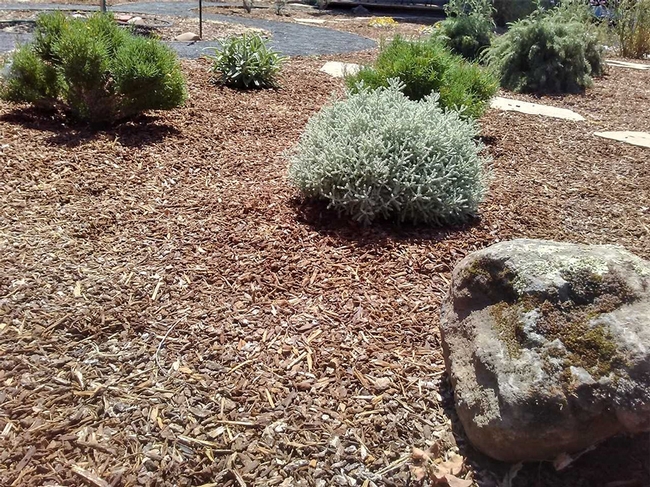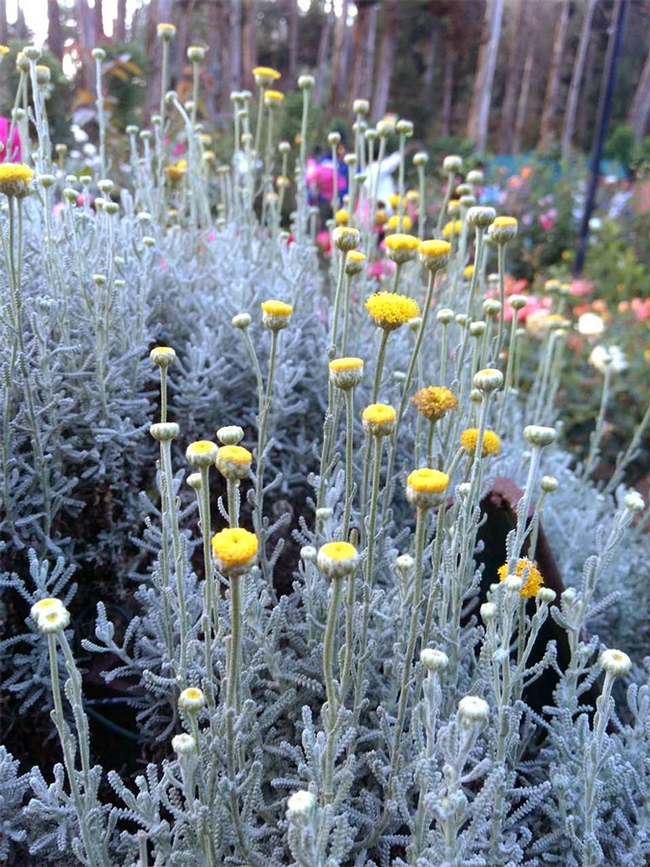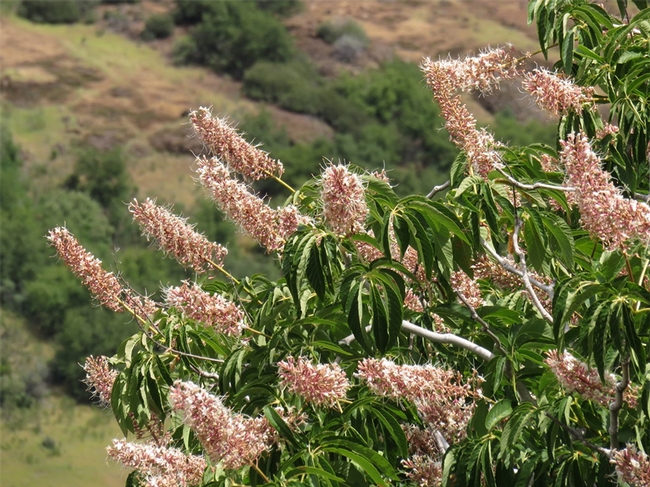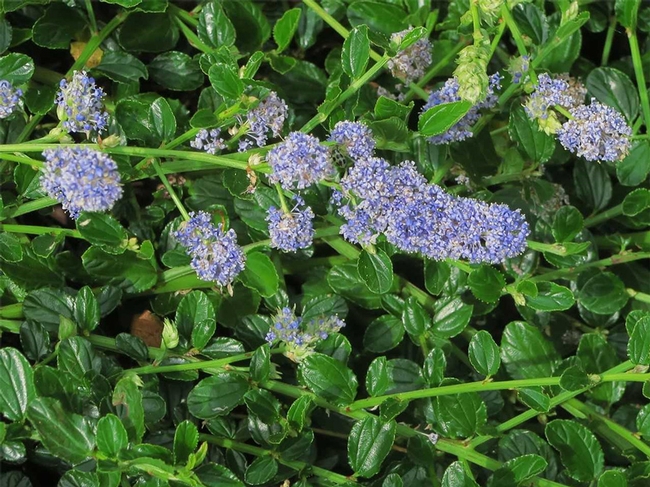By Laura Lukes, UC Master Gardener of Butte County, September 7, 2018

The beauty of evolution is its reliance on trial and error, or adaptation. What works, works very well, and allows life in many forms to exist in some of Earth's harshest environments. The climatic conditions of the planet's seven Mediterranean Zones include between five and seven months of zero precipitation, and many days in a row with high temperatures of over 100 degrees Fahrenheit. These are challenging circumstances for any living thing. Yet a wide variety of plants have evolved clever strategies to survive these long, dry, hot periods.

Generally speaking, there are three major strategies employed by plants to survive annual drought conditions: desiccation tolerance; drought avoidance; and drought tolerance. These strategies evolved through millions of years of adaptation, and are endlessly fascinating in their ingenuity. (Please note that the survival tactics described below, the result of complex chemical and molecular biological processes, are simplified for this article.)
Desiccation Tolerance: To desiccate something is to thoroughly dry it. Tolerance of desiccation gives a plant the remarkable ability to survive almost total dehydration. This strategy is employed by mosses and ferns. Briefly, plants in this category have developed the ability to enter into, and recover from, anhydrobiosis, the cessation of metabolic activity as a result of low intracellular water content. Next time you are hiking in Upper Park or the foothills during the dry months, you can see this phenomenon for yourself. Find a patch of rust colored, crunchy dry moss on a rock, and gently pour a small amount of water on it. In seconds, what appeared to be completely dead vegetation will turn green and supple.

Another form of drought avoidance is early leaf drop. A good example of this is the buckeye (Aesculus), which occupies a unique ecological niche by being one of the first shrubs to leaf out and flower in early spring, and also one of the first to lose its leaves, well before the onslaught of summer heat and drought. Leaves demand precious nutrients and energy, and without them the buckeye can conserve these resources. During years of drought, and during sustained periods of high temperatures, our valley oaks and blue oaks lighten their metabolic load by dropping some leaves earlier than usual.

Drought Tolerance: Lastly, there is this catch-all phrase. Plants in this category are just better at functioning during annual drought conditions, due to a number of creative adaptations. Such plants are also called xerophytes; literally “dry plants.” They remain green all year round, but manage to save or store water, often through structural (usually leaf) morphology. Common structural adaptations for water conservation are:
- Thick, leathery leaves with waxy cuticles, which perform dual functions of cutting down on water loss and reflecting heat away from the plant. Our native Ceanothus (California Lilac) is a prime example of this.
- Small, thin leaves, which effectively reduce the surface area from which water loss can occur. The tiny yet highly fragrant leaves of Santolina typify this adaptation.
- Sunken stomata pits, which trap moist air and reduce water loss rates. Pine needles employ this strategy (as well as being small and thin).
- Hairy leaves, like those found on Cyprus ironwort (Sideritis cypria) or Lamb's Ears (Stachys byzantina), which shade the stomata and reduce contact from hot air, protecting plants from extremes of light and temperature.
Redundancy is a hallmark strategy for species survival (think two kidneys in human beings); and most plants employ more than one method of beating the hot dry summers of the Mediterranean climate. Now that you know what to look for, see how many of these ingenious biological adaptations you can spot.